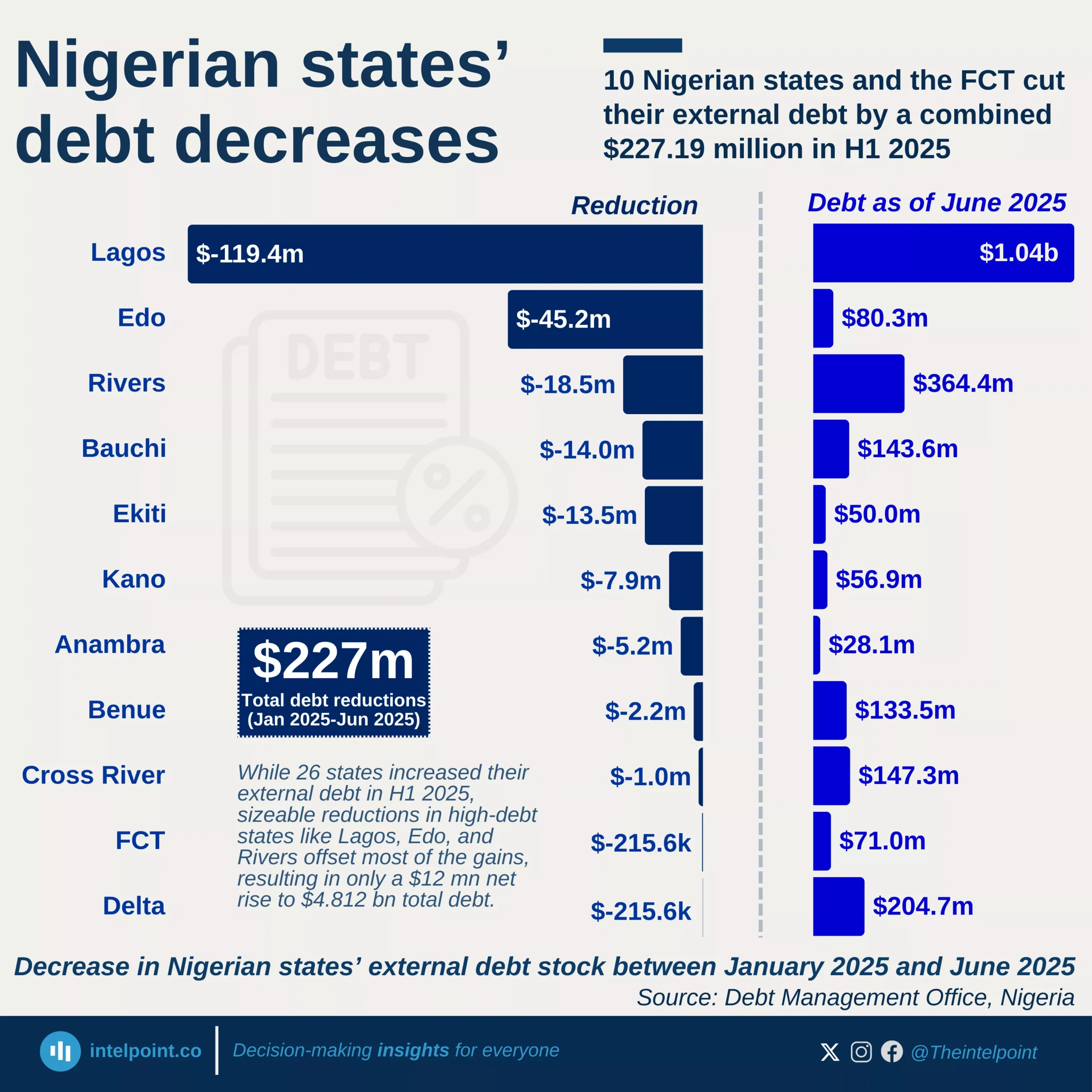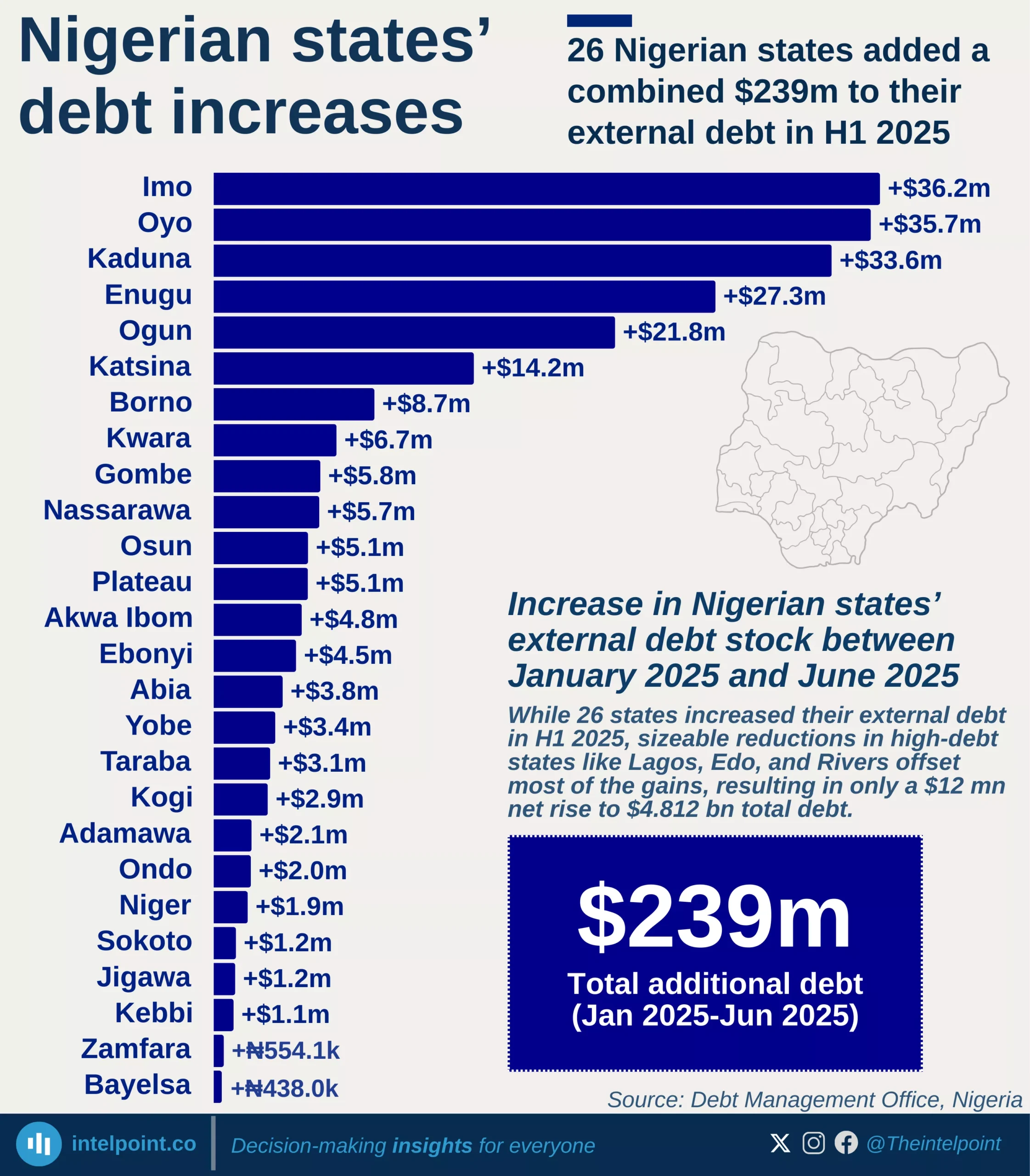Over the last six years, Nigeria’s debt story has become more centralised. In 2019, the Federal Government owed roughly four-fifths of the country’s total debt, but by mid-2025, it owed more than nine-tenths. While total public debt climbed from $83.9 billion to $99.7 billion, state governments’ share shrank drastically.
This shift means borrowing power and pressure now sits firmly in the FCT. The states, once active borrowers for infrastructure and development, are now mostly dependent on federal allocations rather than credit markets. As a result, debt servicing decisions, interest risks, and repayment pressures are increasingly tied to the federal purse.
In short, Nigeria’s debt may be national but the burden is mostly federal.





